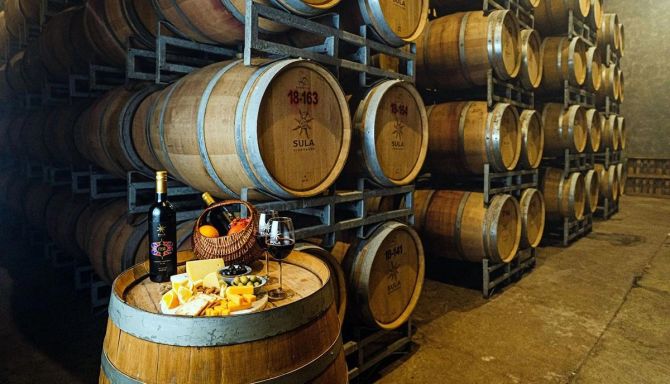Sula Vineyards: Should you subscribe to India’s largest wine seller’s IPO?

The initial public offer (IPO) of India’s largest wine producer and seller Sula Vineyards (Sula) has opened for subscription and will close on Wednesday, December 14.
The issue is entirely an offer-for-sale with 26.9 million shares on the offer, which could fetch Rs 915-960 crore to the promoters and selling shareholders.
The price band is fixed at Rs 340-357.
As per iPOWatch, the stock is currently commanding a grey market premium (GMP) of 11 per cent over the upper price band.
Sula is India’s 100 per cent grape wine-market leader with 52 per cent share.
The grape wine market itself is 85 per cent of the overall wine segment.
The company also leads across all four price segments–elite (Rs 950 plus), premium (Rs 700-950), economy (Rs 400-700) and popular (below Rs 400), with a higher share of around 61 per cent by value in the elite and premium categories in FY22.
Its business is classified under wine production, import of wines and spirits, and distribution (wine business); and sales from wine tourism venues, including vineyard resorts and tasting rooms (wine tourism business).
Its revenue contribution from its own brands in the wine business rose from 63.6 per cent in FY20 to 84 per cent in FY22 as imports sharply came down from 31 per cent to 7.9 per cent during this period.
Key risks: Alcoholic beverage is a state subject and, hence, prone to changes in tax regime.
The company benefits from high import duties on international wines, removal or reduction of which will adversely affect its business, risk of climate change.
Here’s what brokerages suggest:
Motilal Oswal: Subscribe for listing gains
Wine contribution to overall alcohol consumption in India is less than 1 per cent vs world average of 13.5 per cent.
Over FY22-25, Indian grape wine market is estimated to grow at 24 per cent in terms of value and 17 per cent in volume, implying a clear trend towards premiumisation.
Sula with leadership in premium brands along with the largest distribution network of over 13,500 retail touch points is well placed to capitalise on this growth trend.
We like its focus on D2C model, premiumization and efforts to improve its operational efficiencies.
Given the first of its kind listing in the wine category, investors could fancy the IPO.
We suggest subscribing for listing gains.
ICICI Securities: Subscribe for long-term
Post the Covid-19 pandemic, Sula has had strong growth on the profitability front from FY22 onwards, which it expects to remain range bound (due to higher premiumisation and own brands sales).
The stock is a pure play on the wine sector, which currently sits on a low customer base but is expected to surpass industry growth due to higher acceptability, affordability, and perceived health benefits.
We recommend ‘subscribe with a long term horizon’ as the industry is still at a nascent stage with demand centres concentrated mainly in a few metros.
Sharekhan: Scope for strong listing gains limited
The stock is at discount to the large peers, which could be justified due to high concentration of buyers and risks as state government’s VAT grants contribute to a large part of its profitability.
Consequently, the scope for handsome listing gains is limited as of now.
But, investors could look at the stock in case of weakness post its listing.
Ashika Securities: Subscribe
The business has strong entry barriers given the nature of the product with high capital and time investment (ageing), and one raw material production cycle in a year.
Wine grapes require significant work by farmers, hence, Sula has term supply arrangements (of up to 12 years) with grape growers for approximately 2,290 acres, as of September 30.
Its increasing focus on elite and premium products has led to improvement in gross margins/EBITDA margins from 47.8 per cent and 9.7 per cent in FY20 to 65.29 per cent and 25.6 per cent, respectively, in FY22.
KR Choksey: Subscribe
Sula is poised to benefit from long-term industry growth.
It will also expand its wine tourism business by increasing its branding and marketing initiatives.
The company is expected to emphasize premiumisation, improve its realisation and yield higher margins.
Source: Read Full Article

